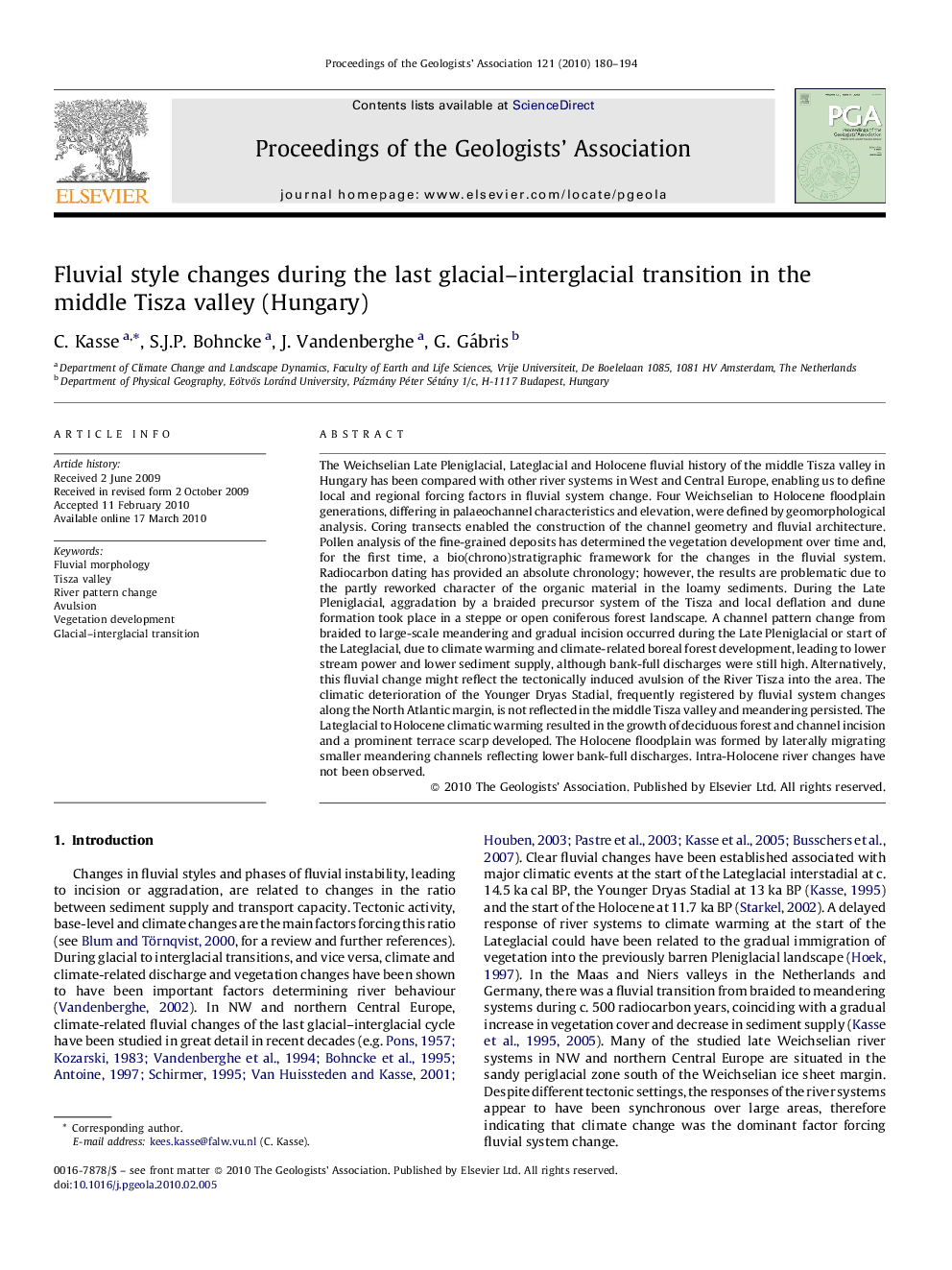| کد مقاله | کد نشریه | سال انتشار | مقاله انگلیسی | نسخه تمام متن |
|---|---|---|---|---|
| 4735182 | 1640673 | 2010 | 15 صفحه PDF | دانلود رایگان |

The Weichselian Late Pleniglacial, Lateglacial and Holocene fluvial history of the middle Tisza valley in Hungary has been compared with other river systems in West and Central Europe, enabling us to define local and regional forcing factors in fluvial system change. Four Weichselian to Holocene floodplain generations, differing in palaeochannel characteristics and elevation, were defined by geomorphological analysis. Coring transects enabled the construction of the channel geometry and fluvial architecture. Pollen analysis of the fine-grained deposits has determined the vegetation development over time and, for the first time, a bio(chrono)stratigraphic framework for the changes in the fluvial system. Radiocarbon dating has provided an absolute chronology; however, the results are problematic due to the partly reworked character of the organic material in the loamy sediments. During the Late Pleniglacial, aggradation by a braided precursor system of the Tisza and local deflation and dune formation took place in a steppe or open coniferous forest landscape. A channel pattern change from braided to large-scale meandering and gradual incision occurred during the Late Pleniglacial or start of the Lateglacial, due to climate warming and climate-related boreal forest development, leading to lower stream power and lower sediment supply, although bank-full discharges were still high. Alternatively, this fluvial change might reflect the tectonically induced avulsion of the River Tisza into the area. The climatic deterioration of the Younger Dryas Stadial, frequently registered by fluvial system changes along the North Atlantic margin, is not reflected in the middle Tisza valley and meandering persisted. The Lateglacial to Holocene climatic warming resulted in the growth of deciduous forest and channel incision and a prominent terrace scarp developed. The Holocene floodplain was formed by laterally migrating smaller meandering channels reflecting lower bank-full discharges. Intra-Holocene river changes have not been observed.
Journal: Proceedings of the Geologists' Association - Volume 121, Issue 2, 2010, Pages 180–194